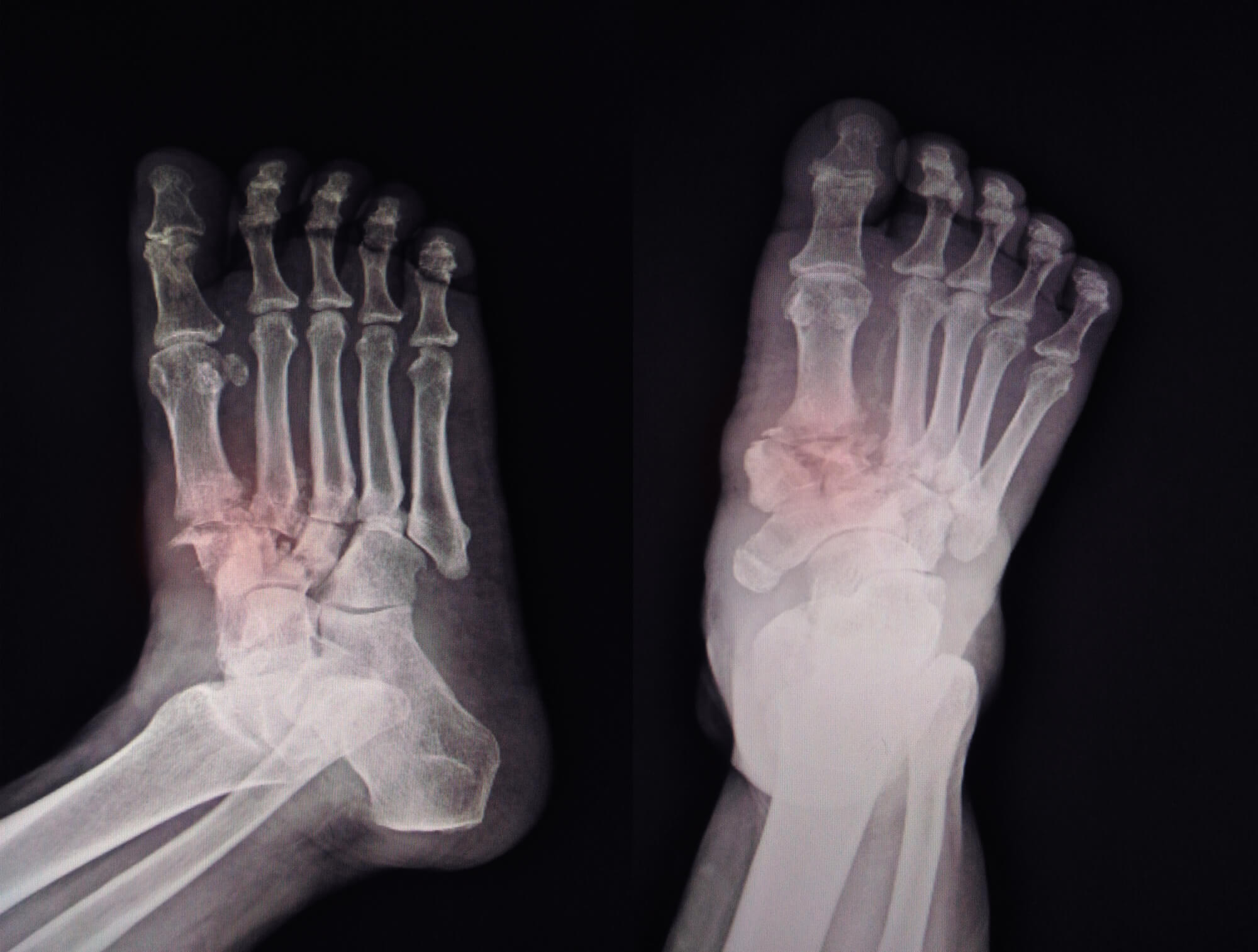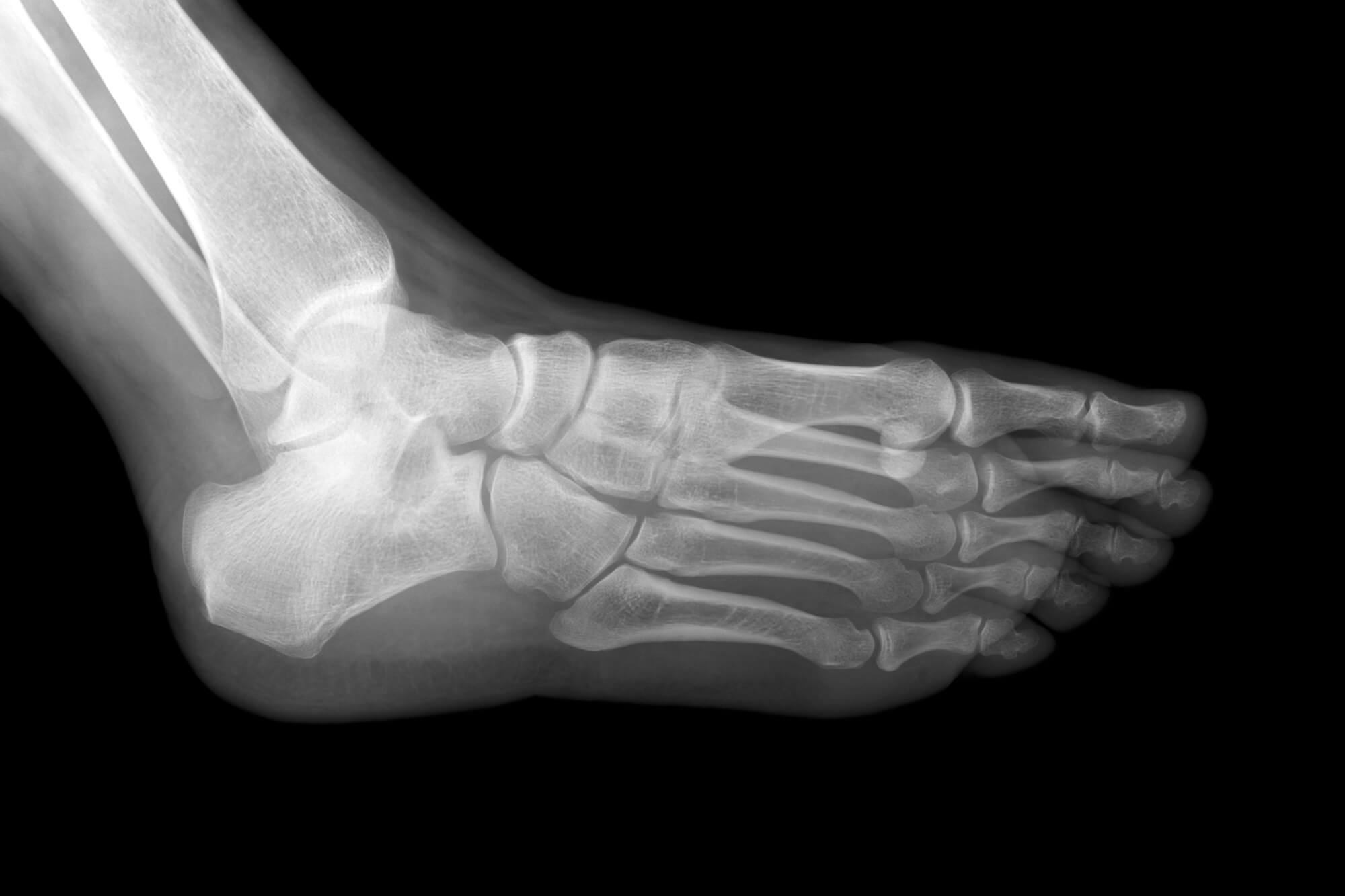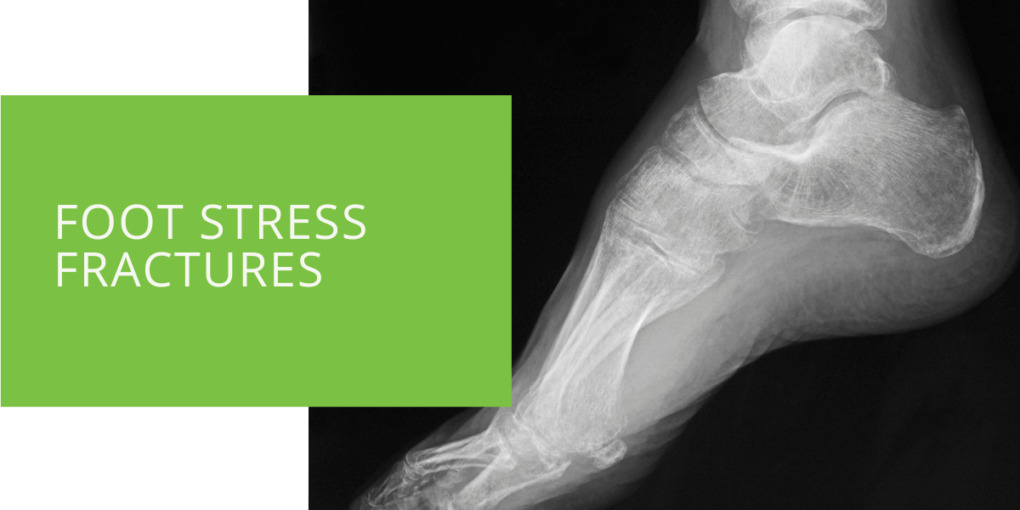Foot Stress Fractures: Symptoms, Causes & Tests
If you're experiencing pain in your foot that doesn't go away with rest or other conservative measures, you may suffer from a foot stress fracture. Stress fractures are small cracks or breaks in the bones of the foot that occur due to repetitive stress or overuse. These injuries are common in athletes, but anyone can develop a stress fracture, especially if they participate in high-impact activities or have certain risk factors.
This article will delve into the causes, symptoms, and diagnostic tests for foot stress fractures. We'll also explore treatment options and offer tips on how to prevent these injuries. If you're experiencing foot pain that doesn't go away, it's important to see a podiatrist or other medical professional for a proper diagnosis and treatment plan.
What is a Foot Stress Fracture?
Definition
A stress fracture is a small crack or break in a bone that occurs due to repetitive stress or overuse. These fractures are most common in the weight-bearing bones of the foot, such as the metatarsals (the bones in the midfoot) and the tibia (the shin bone). Stress fractures can also occur in the heel bone (calcaneus) or the ankle bone (talus).
Symptoms
The most common symptom of a foot stress fracture is pain during or after physical activity. This pain may be described as a dull ache or a sharp, stabbing sensation. The affected area may also be tender to the touch or feel swollen.
In some cases, the pain may go away with rest but return when you resume physical activity. As the stress fracture progresses, the pain may become constant and interfere with daily activities.

Causes of Foot Stress Fractures
Overuse Injuries
One of the main causes of foot stress fractures is overuse. You may develop a stress fracture when you put repetitive stress on your bones without giving them adequate time to rest and heal. This can occur if you participate in high-impact activities, such as running or jumping, or if you suddenly increase the intensity or duration of your workouts.
Bone Structure and Health
Certain factors can also increase your risk of developing a stress fracture, including:
- Weak bones: If you have osteoporosis or other conditions that weaken your bones, you may be more susceptible to stress fractures.
- Flat feet or high arches: These foot types can put extra strain on the bones of the foot and increase your risk of stress fractures.
- Improper footwear: Wearing shoes that don't provide enough support or cushioning can also increase your risk of stress fractures.
Diagnosing Foot Stress Fractures
If you're experiencing foot pain that doesn't go away, it's important to see a podiatrist or other medical professional for a proper diagnosis. Your doctor will perform a physical exam and ask about your medical history and symptoms. They may also recommend one or more of the following diagnostic tests to confirm a stress fracture:
Physical Exam
During the physical exam, your doctor will examine your foot for swelling, tenderness, and other signs of a stress fracture. They may also ask you to perform certain movements or activities to help determine the location and severity of the injury.
Imaging Tests
Imaging tests, such as x-rays, can help your doctor see the bones in your foot and determine if you have a stress fracture. While x-rays can't always detect stress fractures, they can help rule out other conditions that may be causing your pain.

Bone Scan
A bone scan is a test that uses a small amount of radioactive dye to produce detailed images of the bones in your foot. During the test, a small amount of dye is injected into a vein in your arm. The dye then travels through your bloodstream and collects in the bones, highlighting areas of increased blood flow or bone metabolism. This can help your doctor identify areas of the foot that are damaged or healing, such as a stress fracture.
The bone scan may be recommended if an x-ray or other imaging test is inconclusive or if your doctor suspects a stress fracture, but it's not visible on an x-ray. However, bone scans may not be recommended for pregnant women or those who have allergies to the dye used in the test.
Magnetic Resonance Imaging (MRI)
An MRI uses powerful magnets and radio waves to create detailed images of your foot's bones and soft tissues. This test is more sensitive than x-rays and can detect stress fractures that may not be visible on an x-ray. However, an MRI is typically more expensive and may not be necessary in all cases.
Computerized Tomography (CT) Scan
A CT scan uses x-rays and a computer to create detailed cross-sectional images of the bones in your foot. Like an MRI, a CT scan can detect stress fractures that may not be visible on an x-ray. However, CT scans also expose you to a higher dose of radiation, so they should be used cautiously.

Treatment and Recovery
The treatment and recovery process for a foot stress fracture will depend on the location and severity of the injury. In most cases, the goal of treatment is to allow the bone to heal properly and prevent further damage.
Rest and Recovery
The most important treatment for a foot stress fracture is rest. This means avoiding any activities that put weight or stress on the affected foot. Your doctor may recommend crutches or a boot to keep weight off the foot while it heals.
Physical Therapy
Physical therapy can help strengthen the muscles and improve the range of motion in your foot after a stress fracture. Your physical therapist may recommend exercises to stretch and strengthen your foot and lower leg muscles.
Medications
Your doctor may prescribe medications to help reduce inflammation and pain while your foot heals. Nonsteroidal anti-inflammatory drugs (NSAIDs) such as ibuprofen and naproxen are commonly used to reduce inflammation and pain.
Surgery
In rare cases, surgery may be necessary to repair a stress fracture that doesn't heal with other treatments. Surgery may also be necessary if the stress fracture is accompanied by other injuries, such as a broken bone or a ligament tear.

Preventing Foot Stress Fractures
To prevent foot stress fractures, taking care of your feet and paying attention to your body's warning signs is important. Here are some tips to help prevent stress fractures:
Proper Footwear
Wearing shoes that provide adequate support and cushioning can help reduce your risk of stress fractures. It's also important to replace your shoes regularly, as they can lose support and cushioning over time.
Warm-Up and Cool-Down Exercises
Incorporating warm-up and cool-down exercises into your workouts can help prevent overuse injuries, including stress fractures. Start your workouts with some light stretching and gradually increase the intensity, and be sure to take a few minutes to cool down and stretch after your workout.
Cross-Training
Mixing up your workouts and participating in different activities can help prevent overuse injuries by evenly distributing the stress on your bones. For example, if you're a runner, consider incorporating activities like swimming or cycling into your routine to give your feet a break.
Adequate Rest and Recovery
It's important to give your feet (and your body) adequate rest and recovery time between workouts. If you're experiencing pain or discomfort, take a break and allow your body to heal before resuming physical activity.

Conclusion
Foot stress fractures are small cracks or breaks in the bones of the foot that occur due to repetitive stress or overuse. These injuries can be painful and interfere with daily activities, but with proper treatment and prevention measures, you can heal your stress fracture and get back to your regular activities. If you're experiencing foot pain that doesn't go away, it's important to see a podiatrist or other medical professional for a proper diagnosis and treatment plan. Your doctor can recommend the best course of action based on the location and severity of your stress fracture.
It's also important to take steps to prevent foot stress fractures by wearing proper footwear, incorporating warm-up and cool-down exercises into your workouts, cross-training, and allowing for adequate rest and recovery time. Following these prevention measures can help protect your feet and keep them healthy long-term.

